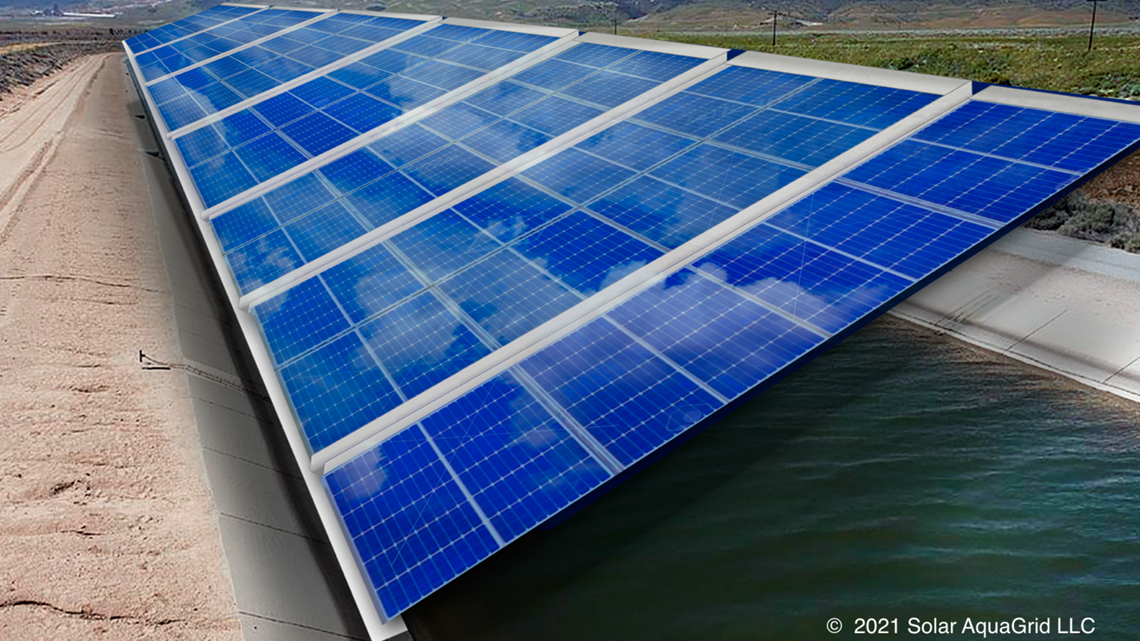This year, solar energy became the state’s largest source of power, surpassing natural gas and supplying more than one-third of California’s total energy.
CALIFORNIA, USA — California’s goal of reaching 100% carbon-free energy by 2045 depends on a delicate balance — generating enough clean, reliable power to meet a rapidly growing demand while keeping costs affordable for residents and businesses.
High in the Sierra Nevada, a network of lakes and reservoirs powers communities far below. The Sacramento Municipal Utility District (SMUD) operates 12 reservoirs and nine powerhouses that not only provide recreation and wildlife habitat but also supply hydropower to the Sacramento area.
“Hydropower is a tried and true method going back to the 1800s — spinning a wheel with water,” said Darold Perry of SMUD. “It provides about 20% of our energy needs in an average year. It can go higher in wetter years, and it allows us to provide reliable, affordable energy.”
The district’s hydroelectric system, built in the 1950s and 1960s, has evolved from providing steady “baseline” power to delivering more energy during peak afternoon and evening hours when demand and prices rise.
“Our hydrogeneration portfolio is critical for SMUD’s 2030 zero-carbon initiative,” said Dan Strickland, adding that the plan is among the most aggressive in the country. “We want to keep our rates as low as possible for all Sacramento ratepayers.”
California’s broader clean-energy goals mirror that ambition. SMUD aims to go 100% renewable by 2030, while the state’s target is a carbon-free grid by 2045.
Much of that push is powered by the sun. Nearly 2 million homes in California now generate solar electricity, helping make it cheaper and more abundant. This year, solar energy became the state’s largest source of power, surpassing natural gas and supplying more than one-third of California’s total energy.
The growth of solar has created a new challenge known as the “duck curve.” During daylight hours, energy demand dips as solar production peaks, then it surges again in the late afternoon as the sun sets and air conditioners and appliances switch on.
One solution is large-scale battery storage, which has expanded rapidly in recent years.
“In the last four years, we’ve brought on over 20,000 megawatts of new generation,” said Elliot Mainzer with the California Independent System Operator. “The goal in running an electricity grid is to make sure you can provide enough electricity 24/7 — that requires a combination of different attributes.”
To meet those needs, California is fast-tracking massive new solar and storage projects. The Darden Clean Energy Project in Fresno County will use more than 3 million solar panels and batteries to power 850,000 homes. The Cornucopia Hybrid Project is expected to supply energy for up to 300,000 homes.
Innovation continues at the local level, too. The Turlock Irrigation District received a $20 million state grant to install solar panels over irrigation canals, an experiment designed to both generate power and reduce water evaporation.
“We’re the oldest irrigation district but trying new things is in our DNA,” said TID spokesperson Josh Weimer. “We say yes to projects. We look at different solutions for the challenges ahead of us.”
If successful, the canal project could eventually expand to sections of the California Aqueduct.
“It’s a potential solution, because we’re going to need all options on the table to reach a 100% carbon-free grid by 2045,” Weimer said.
Wind power is another major piece of the state’s clean-energy equation. California’s wind industry began in the 1980s in the Altamont Pass, but stronger and steadier winds blow offshore along the coast. Proposed offshore projects near Humboldt and Morro Bay have drawn pushback from fishermen and coastal residents worried about environmental and economic impacts.
“We don’t know what the cumulative impacts will be — not just on fisheries but on the entire marine ecosystem,” said Mike Conroy of West Coast Fisheries Consultants. “If we’re going to do this, let’s do it right.”
Despite the challenges, energy experts say California continues to break ground on renewable milestones.
“Last year alone, California’s grid ran on 100% clean energy for the equivalent of 51 full days,” said Alex Jackson with the American Clean Power Association. “If trends hold, that number could rise to 80 days this year.”
Stanford researchers project the state could operate on 100% renewable energy around the clock by 2033.
Just last month, California compiled data from 2023 and found that 67% of its energy came from renewable sources, breaking the record for the third straight year.
Current challenges from federal funding of renewable projects may temporarily slow or stop some projects in the near future, but many existing projects are currently in the planning or construction phases. Renewable energy sources in many cases provide the cheapest and fastest source of new energy even without subsidies from government grants.
Water Wasted: The power of groundwater | To The Point
ABC10: Watch, Download, Read

